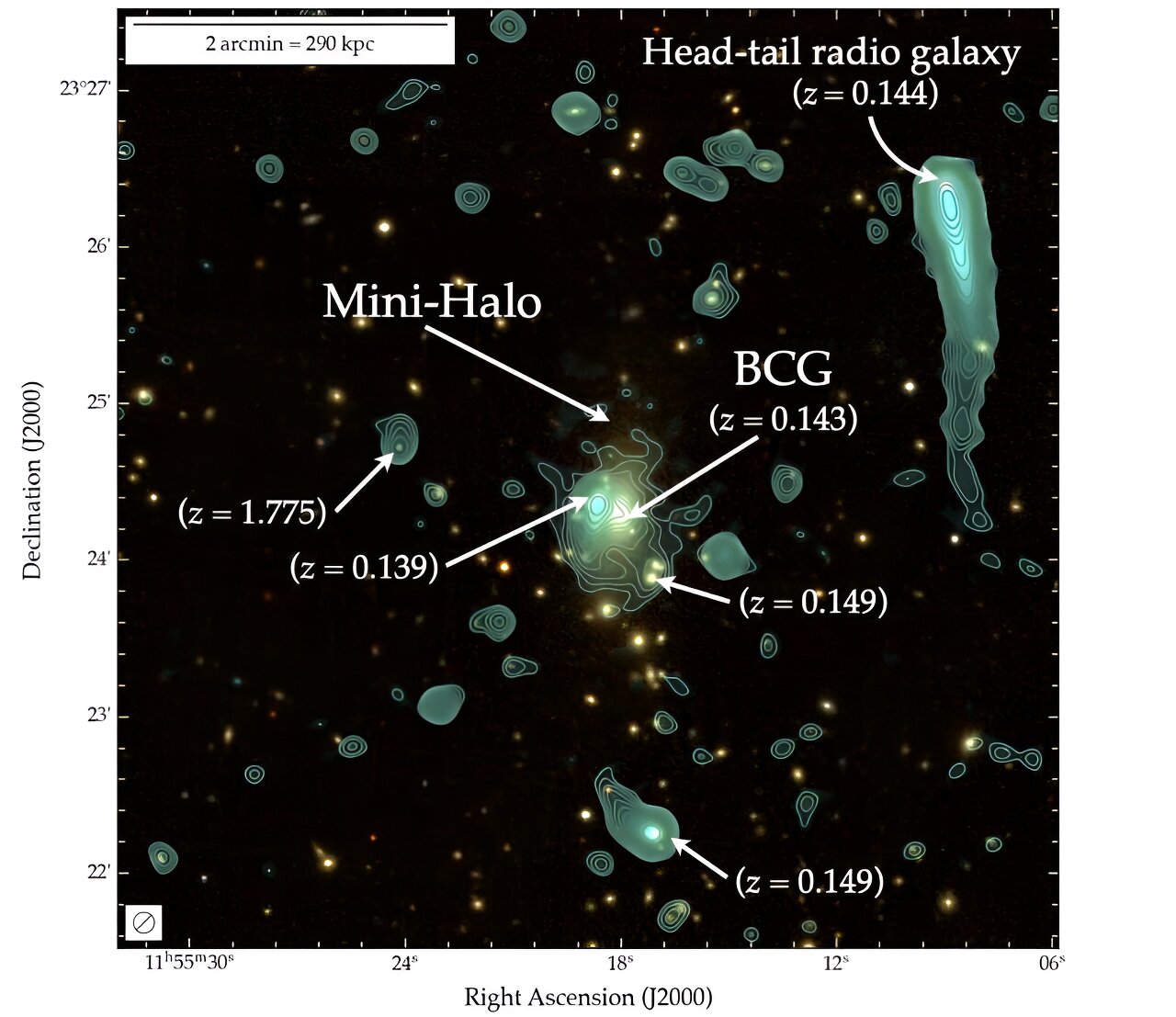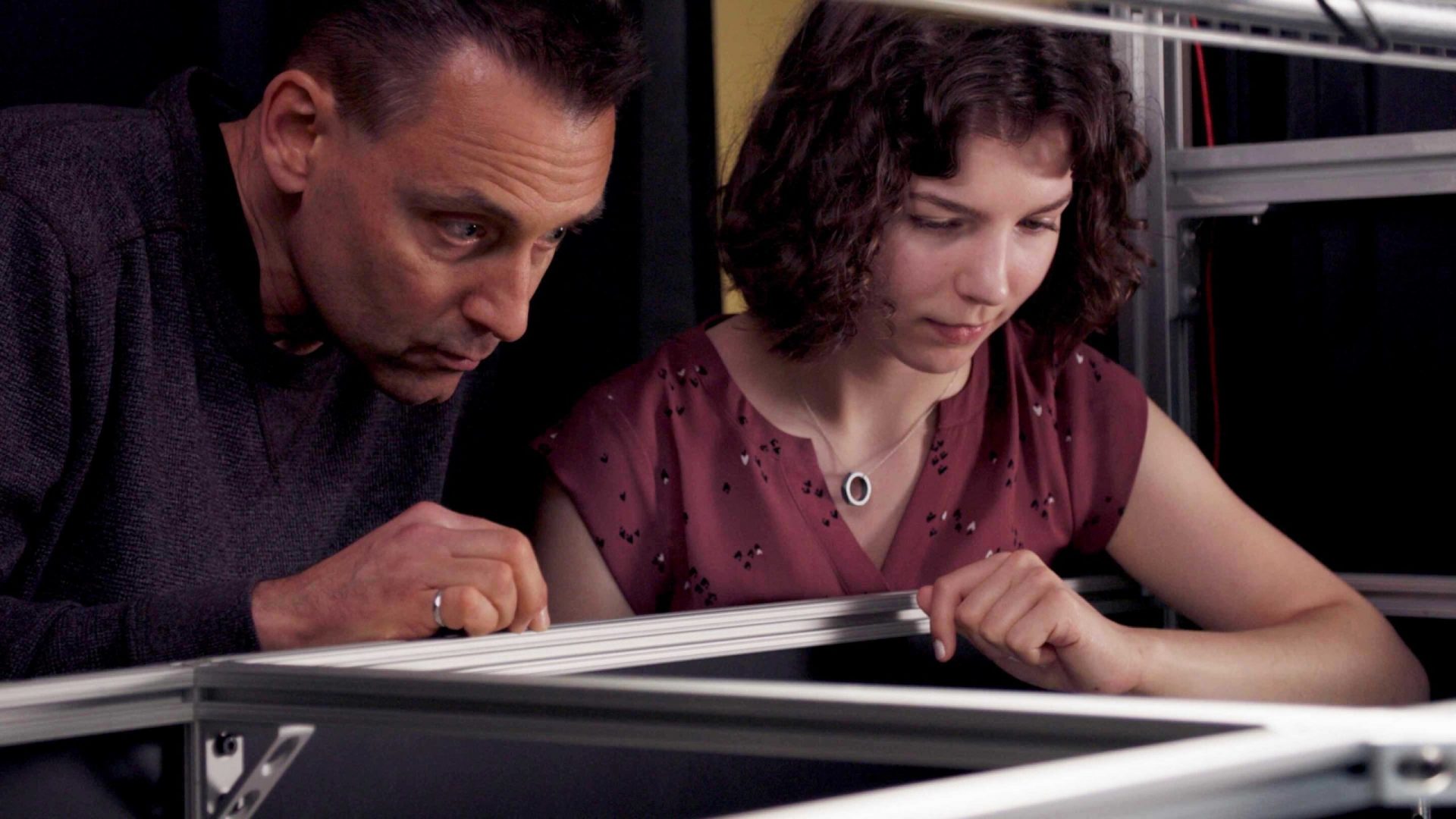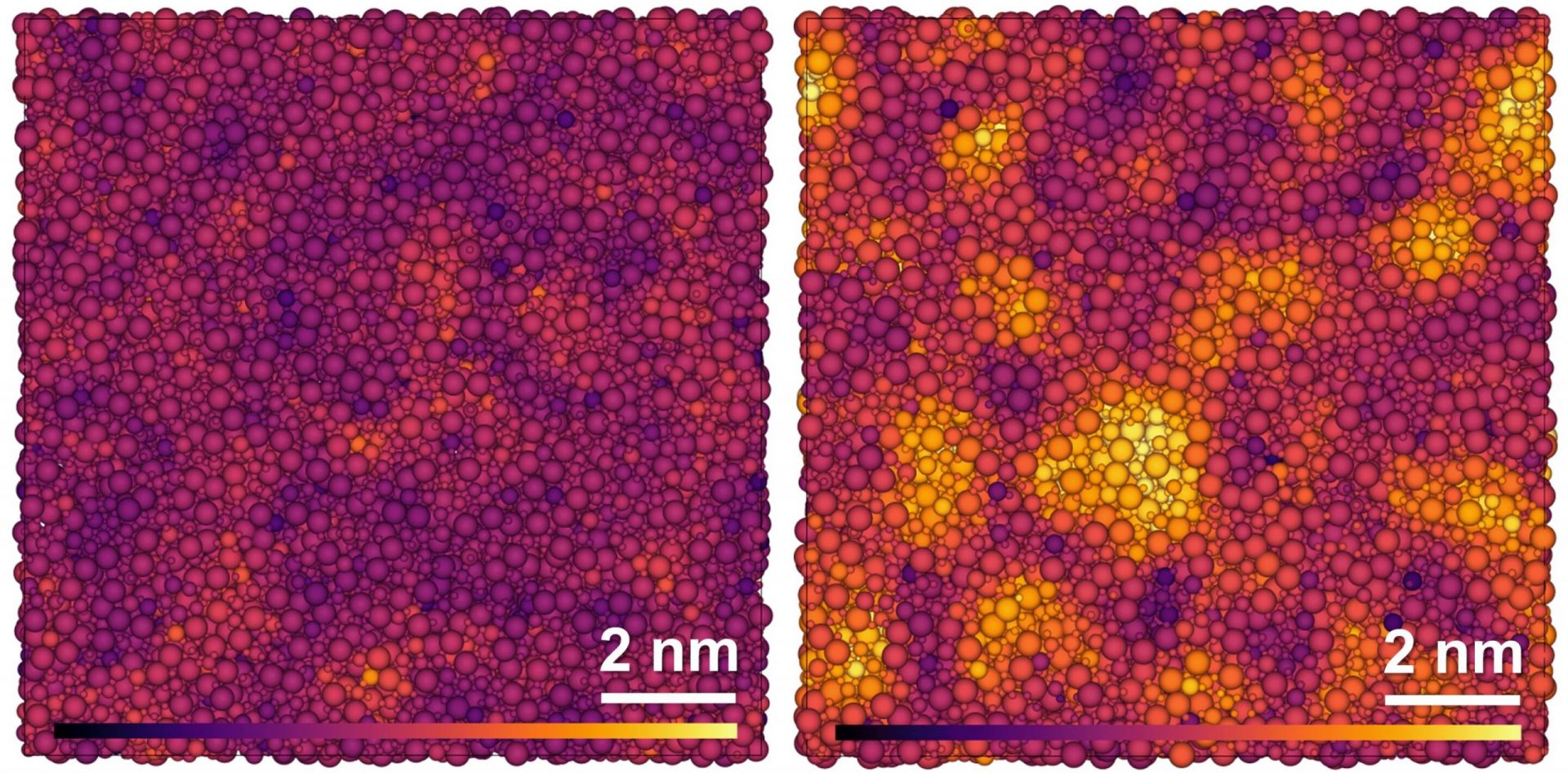Prepare to be amazed as European astronomers use the LOw-Frequency ARray (LOFAR) and MeerKAT telescope to uncover the secrets of the galaxy cluster Abell 1413. In a groundbreaking study published in the esteemed Monthly Notices of the Royal Astronomical Society journal, these astronomers have shed new light on the properties of this cluster.
Galaxy clusters, with their thousands of galaxies held together by gravity, are the universe’s largest known gravitationally bound structures. They provide an excellent opportunity to study galaxy evolution and cosmology.
Located a staggering 2.1 billion light years away, Abell 1413 is a type I galaxy cluster boasting around 300 galaxies and a mini-halo. Although the cluster’s X-ray morphology appears slightly disturbed, there is no concrete evidence of a recent merger. The estimated mass of Abell 1413 is a mind-boggling 600 trillion solar masses.
Christopher Riseley and his team from the University of Bologna in Italy embarked on a mission to unravel the mysteries of Abell 1413. Their deep MeerKAT observations, spanning the frequency range 872−1,712 MHz, and LOFAR high-band antenna (HBA) observations, covering 120−168 MHz, provided invaluable insights into the cluster’s peculiar morphology and general properties.
“Our new MeerKAT L-band (1,283 MHz) and LOFAR HBA (145 MHz) observations of the galaxy cluster Abell 1413, which hosts a known mini-halo, have allowed us to perform a detailed comparison of the thermal and non-thermal properties of this intriguing cluster,” wrote the researchers in their paper.
The observations revealed numerous compact radio sources near Abell 1413, as well as several tailed radio galaxies that are likely members of the cluster. Additionally, the campaign unveiled faint and highly-extended radio emission from Abell 1413’s mini-halo, stretching up to 1.9 million light years at 1,283 MHz.
Upon analyzing the data, the team made a surprising discovery: Abell 1413’s mini-halo is asymmetric and twice as large as previously believed. The researchers also examined the spectral index profile of the mini-halo, finding that its inner region displays a slightly flatter spectrum, while its outer regions have a steeper value. These results suggest spectral steepening.
Furthermore, the study found a strong correlation between the radio/X-ray surface brightness of Abell 1413. The data showed a positive slope in this correlation, providing further evidence of spectral steepening.
As the researchers delved into the nature of the mechanism powering the mini-halo in Abell 1413, they proposed a simple theoretical model. This model demonstrates that hybrid scenarios, involving re-acceleration of secondary electrons by turbulence, can naturally explain the super-linear correlation slope observed in this cluster.
“While the super-linear slope is a typical signature of the hadronic scenario, our observations also support the interpretation that there is large-scale turbulence at work in Abell 1413. Hence, we investigated a simple mathematical framework which demonstrates that hybrid models naturally reproduce a super-linear correlation slope in the ?R/?X plane,” concluded the researchers.








